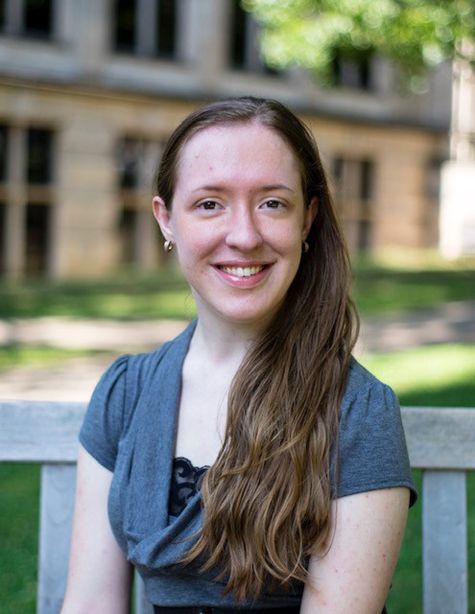Early Career Scientist Spotlight
Dr. Caitlin Ahrens (she/her/hers)
Planetary Geologist
Planetary Geology, Geophysics and Geochemistry Laboratory (698)
What is your research focus?
My research focus is quite diverse in Earth and planetary sciences, from volcanism on the Moon, Mars, and Venus, to glacial processes on Pluto, to volatile interactions at the lunar poles. My main research includes exploring the morphological variability and thermophysical processes of frozen volatiles at the lunar poles. I study the relationship between lunar ice and the environment in which it accumulates. A few big science questions we have about lunar polar ice are: what kind of chemical species could be frozen in these conditions? What are the origins of the volatiles? How are the volatiles intermixed with the lunar regolith (loose rocky soil at the lunar surface)? And what are the volatile processes in transient shadowed regions compared to permanent shadowed regions?
To do this, I use data from the Diviner instrument onboard NASA’s Lunar Reconnaissance Orbiter (LRO). The results of my research provide a fresh perspective on how these ices may have formed and their current interactions with regolith and surrounding geology. My work is relevant for upcoming lunar polar mission objectives and traverse planning. I have recently been appointed the Lunar sub-team lead at the Goddard Center for Astrobiology. My roles include investigating how permanently shadowed regions may contain volatile-organic compounds at extremely low temperatures on the Moon and researching potential technologies for sampling containment systems.
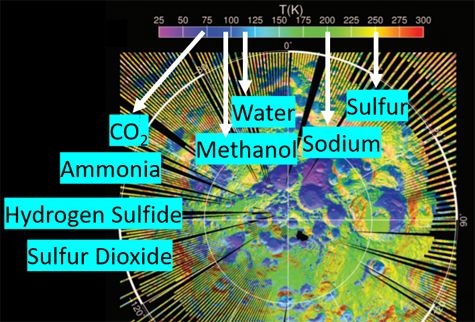
Credit: UCLA/NASA/JPL/Goddard
What keeps you inspired by your work?
The inspiration comes from the consistent curiosity to learn about different planetary environments. Connecting astronomy and geology, and sometimes using Earth as a template for understanding these planetary environments, have all created a bigger picture for me in understanding just how extraordinarily different the planets and moons in our Solar System really are. It helps to learn skillsets for one planetary body and it’s fascinating to see how those skills apply to other bodies. There is also inspiration in knowing that field work or management work can lead to exciting opportunities in instrument or mission planning in the future.
Did you always know that you wanted to study planetary science?
I became interested in rock collecting at an early age and joined a local astronomy club in West Virginia at the age of 9. Joining that club exposed me to many subfields of astronomy. I had started research in radio astronomy working on pulsars, dabbled in seismology, and took a semester of rocket science, where I got to work with the NASA Wallops Flight Facility and helped build a student-run payload for a Terrier-Improved Orion high-altitude rocket. It was not until my third year of undergraduate studies at West Virginia University that I could combine my passions for rocks and space! I did an internship at the US Geological Society (USGS) Astrogeology Center in Flagstaff, Arizona and was immediately enraptured by planetary sciences. I then went on to study Pluto and designed and helped build a Pluto experimental environmental chamber for my Ph.D. at the University of Arkansas.
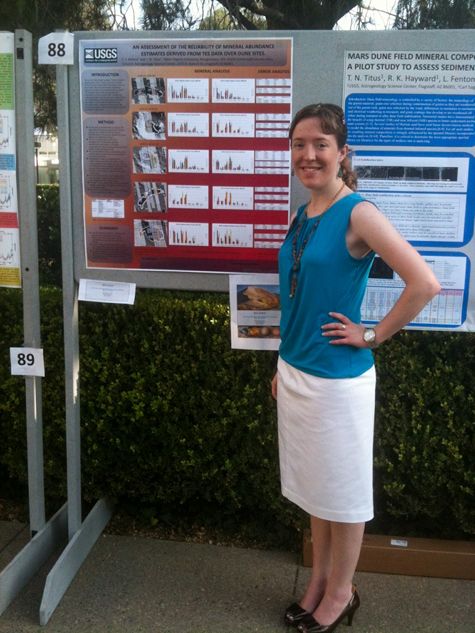
Credit: Caitlin Ahrens
What aspect(s) of your work are you most passionate about?
Communicating my science on a variety of platforms, whether through conferences or involvement with interdisciplinary teams (like the Goddard Center for Astrobiology and labs within the Planetary Geodynamics lab). Communicating science with many people around the world is crucial to presenting results, learning from each other, and forming new collaborations and projects. The opportunity to present these results to a broader community through outreach is also something I am passionate about, including accessibility of resources to rural communities and the deaf/blind/HoH communities. I have also produced a weekly radio show through the local NPR station talking about Solar System science.
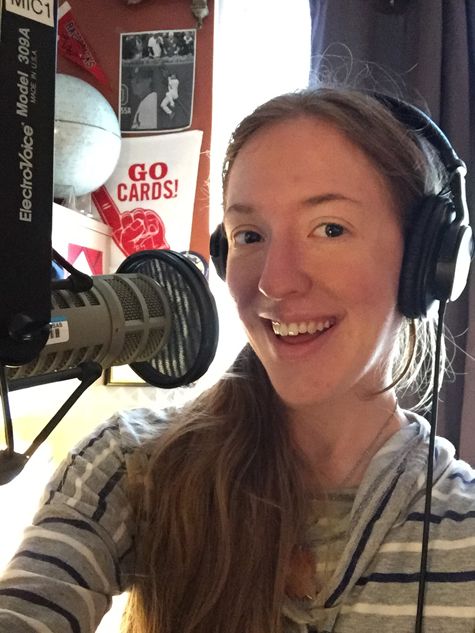
Credit: Caitlin Ahrens
What early career advice do you have for those looking to do what you do?
- Make the STEM journey YOUR journey. There are no cookie-cutter follow-the-book instructions on being a scientist.
- Follow your passions and keep learning from them along the way.
- Learn new things, including from other subfields and learn other techniques, instruments, skillsets, etc.
- Network and continue to meet people and share about your passions with others who may share similar insights (or learn from different points of view).
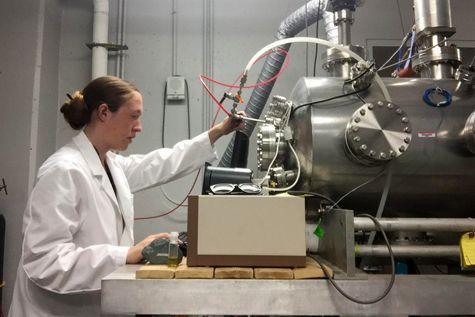
Credit: Caitlin Ahrens
What are your future research interests and goals?
There are several aspects of my research I would like to explore further, particularly experimental research on the lunar polar volatiles at extremely low temperatures and potential links to assist with the Artemis initiative. Furthering the experiments, I would like to pursue more research with cryovolcanic materials and how these materials shape different geologic structures on outer Solar System bodies. I would also like to continue my theoretical earthquake research.

Credit: Caitlin Ahrens
What is a fun fact about you?
I am a NASA Solar System Ambassador and have many exciting avenues to share planetary science with the broader (and international) public. With my efforts in providing STEM materials to a school in Kampala, Uganda, advocacy for blind/deaf outreach materials for better accessibility, and providing free resources for educators in rural communities, I had been awarded the 2018 Ten Outstanding Young Americans (TOYA) presented by the U.S. Junior Chamber.
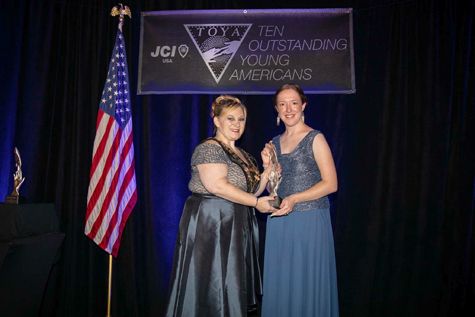
Credit: U.S. Jaycees
Biography
Home Town:
Fairmont, West Virginia
Undergraduate Degree:
B.S. Physics/Astrophysics; B.S. Geology: West Virginia University, Morgantown, WV
Post-graduate Degrees:
Ph.D. Planetary & Space Science, University of Arkansas, Fayetteville, AR
